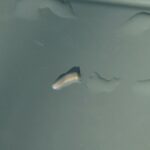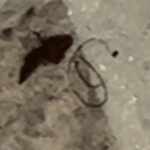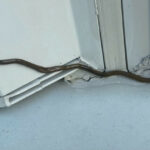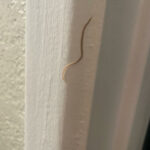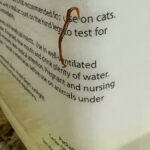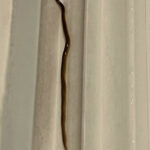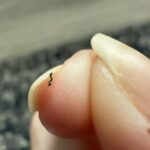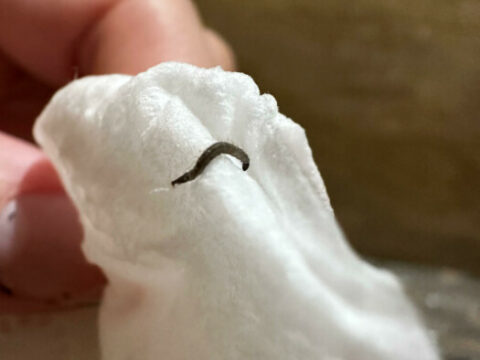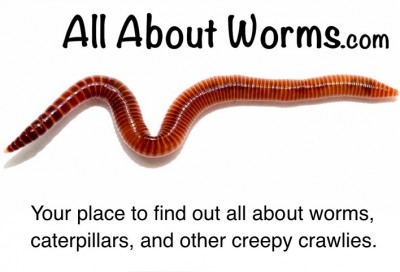
“Is this a hammerhead worm!?” asks this reader in her submission about the gray, slimy-looking worm-like creature pictured below. We actually cannot tell if it is one or two organisms, though we suppose it does not matter much. “I was horrified to find it in my toilet! Thanks.” We understand how our reader feels, as it is never a pleasant experience to find uninvited guests in one’s home, let alone in one’s toilet. And to confirm: yes, this is a hammerhead worm. Our reader may already be familiar with hammerhead worms, as she correctly identified this one, but in case she is not, the basic facts include: Hammerhead worms are predatory worms, though they are not significantly harmful to humans or pets (unless one keeps insects or snails for pests). They feed on insect larvae, snails, slugs, and other hammerhead worms. They are excellent trackers and possess amazing capabilities, such as the ability to regenerate severed body parts and to liquefy their prey.
With regard to their ability to ‘liquefy’ their prey, which we mean quite literally, this is the only thing that is remotely harmful to humans. The way they do this is by secreting a fluid which dissolves their meal. They also possess another toxin they can secrete which paralyzes their prey. Now, if a human gets either one of these fluids on them, they are not going to become paralyzed or dissolve, but pain and/or irritation can occur, so it is best to avoid making direct, physical contact with a hammerhead worm. Instead, we recommend that she scoop it up onto a dustpan and take it outside. We definitely do not recommend killing it inside her home, or at all for that matter, as that can actually attract more hammerheads.
Now, our reader may be wondering how it ended up in her toilet. Worms are able to come up through people’s drains if there is a leak in the pipes somewhere underground. Signs of a leak include foul-smelling or -tasting water, changes in water pressure, and discoloration of water. If she thinks she is experiencing a leak, we suggest she contact a professional to deal with that. Until then, the best thing she can do is keep her drains clean, and to clean them often.
To conclude, the long, gray worm our reader found in her toilet is indeed a hammerhead flatworm. They are not dangerous to humans, though touching them can cause mild pain and irritation. We hope this helps, and we wish her the very best!
All About Worms is always free, always reader-supported. Your tips via CashApp, Venmo, or Paypal are appreciated! Receipts will come from ISIPP Publishing.
You might also find these guys interesting!




